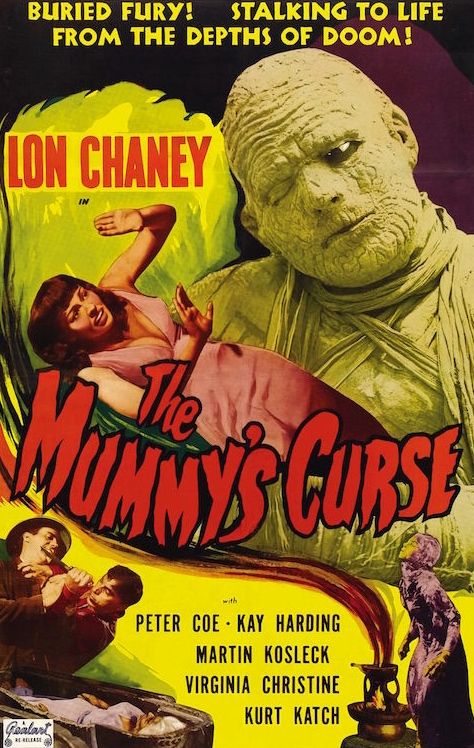Today’s Bizarro, with an outrageous play on The Mummy’s Curse (the movie):
Four ingredients in this bit of language play: the sarcophagus and its association with mummies; Silicon Valley and its association with computers; the cursor and its role in computer work; and the name of the movie. And the interesting histories of the words sarcophagus and cursor.
About the movie, from Wikipedia:
The Mummy’s Curse is the 1944 horror film follow-up to The Mummy’s Ghost. This film marks Lon Chaney, Jr.’s final appearance as Kharis, the Egyptian mummy.
The word sarcophagus doesn’t come up often in daily life. Here’s NOAD2 on the word:
noun (pl. sarcophagi) a stone coffin, typically adorned with a sculpture or inscription and associated with the ancient civilizations of Egypt, Rome, and Greece. ORIGIN late Middle English: via Latin from Greek sarkophagos ‘flesh-consuming,’ from sarx, sark– ‘flesh’ + –phagos ‘-eating.’
The etymology introduces a puzzle: ‘flesh-consuming’? For a stone coffin (in which mummies could be entombed)? OED2 provides the missing link: a now-obsolete sense of the word that preceded the ‘stone coffin’ sense:
A kind of stone reputed among the Greeks to have the property of consuming the flesh of dead bodies deposited in it, and consequently used for coffins.
So much for sarcophagus. What about the noun cursor? The current dominant sense (quite familiar to most people these days, and obviously of fairly recent origin) and the etymology of the word, from NOAD2:
a movable indicator on a computer screen identifying the point that will be affected by input from the user, for example showing where typed text will be inserted. ORIGIN Middle English (denoting a runner or running messenger): from Latin,‘runner,’ from curs- [‘run’]
There’s a clearly metaphorical development here, with the moveable indicator treated as running. It turns out that here there is also a preceding use. From NOAD2 again:
chiefly historical the transparent slide engraved with a hairline that is part of a slide rule and is used for marking a point on the rule while bringing a point on the central sliding portion up to it… The sense ‘sliding part of an instrument’ dates from the late 16th cent.

